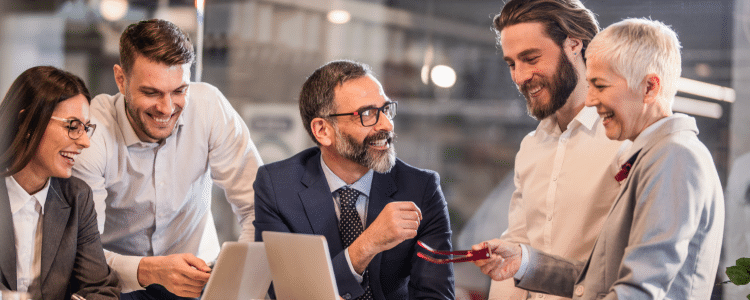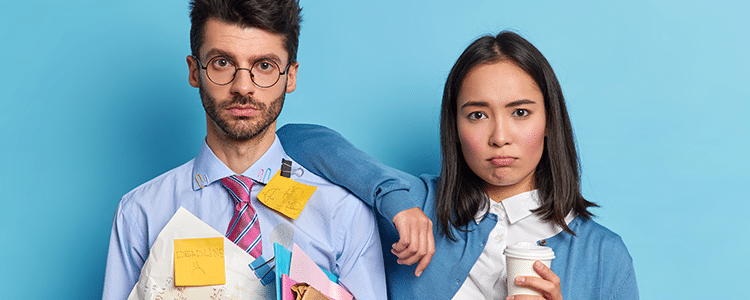Last May, rental car giant Hertz officially filed for Chapter 11 bankruptcy. At the onset, many industry analysts were quick to link this to the devastating COVID-19 pandemic. Air travel plummeted a staggering 90% last year as people stayed close to home, and many industry mainstays, including Hertz, took a hit.
While this shift was certainly a factor, the company’s economic woes had been a while in the making. Shouldering a collective $19 billion in debt, Hertz continued to lose money year after year, including a net loss of $58 million in 2019 alone.
At the core of these issues was a Hertz digital transformation that could have catapulted the company toward long-term success, but instead, it resulted in a $32 million Accenture lawsuit that proved to be the linchpin in Hertz’s decline.
Today, we’re sharing what happened, along with the takeaways and lessons to be learned from this failure.
The Hertz Digital Transformation Failure: What Happened?
At one time, the name Hertz was synonymous with success in the rental car sector. One of the most prolific names in the industry, it operated around 10,000 locations with a fleet of around half a million vehicles. In 2012, the brand made moves to expand, acquiring competing companies Dollar and Thrifty.
However, by 2016, ride-sharing services, including Uber and Lyft, were beginning to emerge. In response, rental car use declined as more people opted for this new way of traveling. This signaled the beginning of the end for Hertz, which realized it had overestimated the valuation of its used car inventory.
As financial issues mounted, more division was created. Financial executives at Hertz came under fire for potentially mismanaging records, two CEOs were ousted, and the company reorganized financially and moved its headquarters to Florida. A change was critical, and Accenture answered the call.
The Beginner’s Guide to Digital Transformation
What are the 6 secrets to digital transformation that are helping organizations build competitive advantage?
The $400 Million Plan That Wasn’t
In 2014, Hertz began making plans for a $400 million digital transformation to completely overhaul its existing systems. The goal? To ramp up customer service and enable user-led support.
The technology stack included Angular2, Adobe Experience Manager and MuleSoft, all integrating into a back-end of around 1,800 legacy systems.
Two main requirements defined the transformation:
- It had to extend to Dollar and Thrifty
- It had to be responsive (e.g., accessible from any device)
Global professional services company Accenture joined the effort in 2016, implementing an agile-at-scale methodology. The go-live date for the first phase was scheduled for December 2017, but by late that year, Accenture was booted from the project. In its place was IBM, which already had outsourced control of Hertz’s back-end systems and application management services.
Delays continued through April 2018, and the project never achieved its initial goals. In 2019, Hertz took legal action against Accenture, deeming that the consulting team was responsible for the ultimate failure of the effort.
Undoubtedly, the money and time spent rectifying the failed project and entering litigation contributed to Hertz’s recent decision to file for bankruptcy protection.
4 Takeaways and Lessons Learned
There are a few key lessons we can learn from diving deep into what went wrong at Hertz. Let’s review a few of the most important ones.
1. In-house Project Management Is Critical
While system integrators can be valuable to your digital transformation, they should never have total, unchecked control of the wheel. When you allow a third party to completely direct your project, it’s all too easy to miss even the most glaring warning signs.
Learn more about system integrators by reading our post, What is a System Integrator?
In Hertz’s case, it appears that they gave Accenture enough autonomy that they, in essence, became the project managers.
Instead of outsourcing the entire effort to a system integrator and rushing to meet a go-live date, we recommend establishing an internal project team. This way, you can maintain visibility into every facet of the transformation and ensure business-IT alignment. You should also put risk mitigation strategies in place to make sure the project doesn’t veer off track.
Even if an integrator represents itself as capable of handling the full scale of your project, it’s always best to maintain a strong degree of oversight. An independent ERP consultant can also be valuable in this regard. They can offer an unbiased perspective and help oversee every part of the project, including your partnership with your system integrator.

2. Research Your System Integrator
Another point on system integrators? Do your due diligence when selecting one. Instead of taking the time to weigh multiple options, Hertz chose Accenture over only one other provider. Then, it only took one day of deliberation to solidify the deal.
This wasn’t necessarily the main cause of the failure. Still, it’s worth noting that a more thorough research process may have led Hertz to choose an integrator that was a better fit for its unique needs.
The importance of the right partner cannot be overstated, especially when so much control is relinquished to that team. This is true for both digital transformations and ERP implementations.
3. Set Realistic Timelines
The proposed timeline for the Hertz digital transformation was 16 months. Keeping in mind the size and scale of the project and Hertz’s global reach, this schedule seems unrealistic.
It’s understandable to want your go-live date to happen as soon as possible, but when rollouts are too aggressive, the entire project could suffer.
While Accenture might have proposed that pace and it likely sounded ideal, there was a major catch (and cost).
4. Think Strategy First, Technology Second
Hertz wanted sleek mobile interfaces and a modern, user-friendly website. These are admirable aims, but did they align with the company’s overall business strategy?
While Hertz took a technology-first approach, we recommend taking the time to ask strategic questions, first. These include:
- What is our current business model?
- What should our new business model be?
- Which new markets should we pursue?
- Where can we succeed where competitors have failed?
- How can we use business process reengineering to enable a new business model?
- How can we use organizational change management to enable employees to use new technology?
Before diving excitedly into a digital business transformation, it’s important to answer these questions. From there, you can decide what software functionality is critical and what is lower priority.
A Digital Transformation That Delivers
A successful digital business transformation has the potential to make your company more competitive and customer-focused. However, as we’ve learned through the Hertz digital transformation, the approach you take and the system integrator you select can make all the difference.
Looking for support as you begin planning your own digital transformation? Our business transformation experts and ERP consultants can help. Contact us below for a free consultation.














